Charger Energizer Intelligent Charger CHP42EU
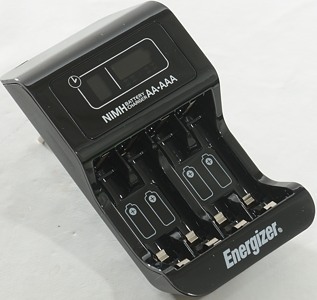
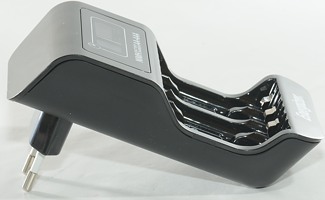
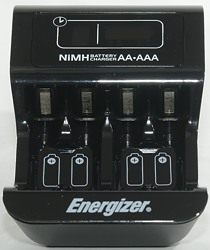
Energizer has a line of NiMH chargers, this one is called intelligent, lets see how smart it is.
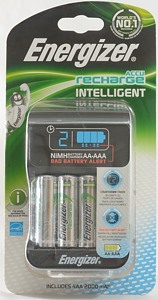
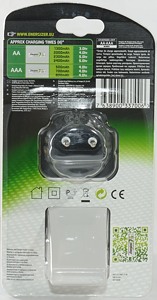

I got the charger in a blister pack.
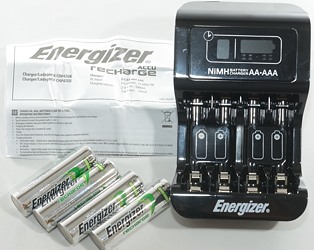
The pack included: The charger, 4 2000mAh energizer cells and an instruction sheet in many languages.
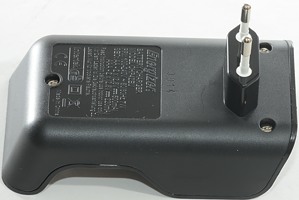
The charger goes directly into a mains outlet.
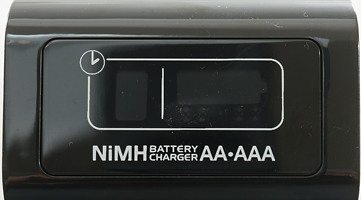
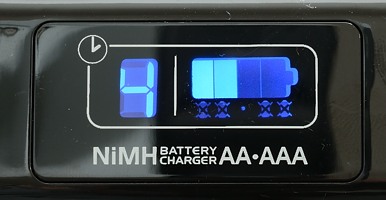
The charger has a down counter and a animated battery symbol. The counter starts at 5 with empty batteries and when it reaches 0 the batteries are fully charged. The animation will stop when charging is done and both 0 and a filled battery symbol will flash.
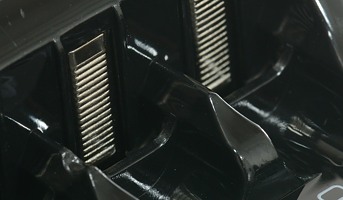
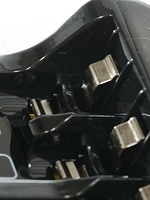
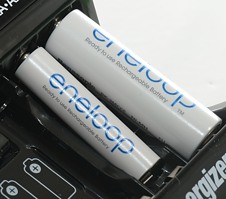
The charger has the typically two level slots used for AA and AAA batteries. It can charge either two or four batteries at a time.


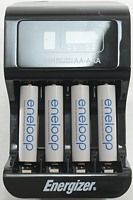
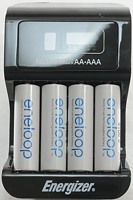
Measurements charger
- Charges two cells in series.
- First channel is slot #1 & #2
- Second channel is slot #3 & #4
- When not powered it will discharge with up to 2.5mA
- The charger performs some analyze on the batteries and will only start charging if they pass.
- Termination is on -dv/dt and time (5 hours) according to the manual.
- Mains standby power is 0.3 watt
%2012.png)
Charging two cells looks fairly good, the termination is a bit slow.
%2034.png)
Second channel (i.e. the other two batteries) looks about the same.
%2012.png)
On the pro cell the termination is a bit early, probably because the other cell is filled or because it terminated due to maximum time. The temperature did increase, this means the cell basically is full.
%2012.png)
Same with the powerex.
%2012.png)
The charge current is lower for AAA cells, again the termination is a bit slow.
%2012.png)
It takes a long time to detect a pair of full cells.
%2012.png)
What about one full cell and one empty? It uses one hour where it is overcharging the full cell, but filling less than 1/4 the needed energy into the empty cell. This is the problem with chargers that handles batteries in series.
.png)
With slot 1+2 containing full batteries and 3+4 containing empty batteries, the charger works fine.
It will not rapport when charging stopped on 1+2, it will first report done when 3+4 is full.
.png)
I wonder why the current jumps up and down, but it get the job done.
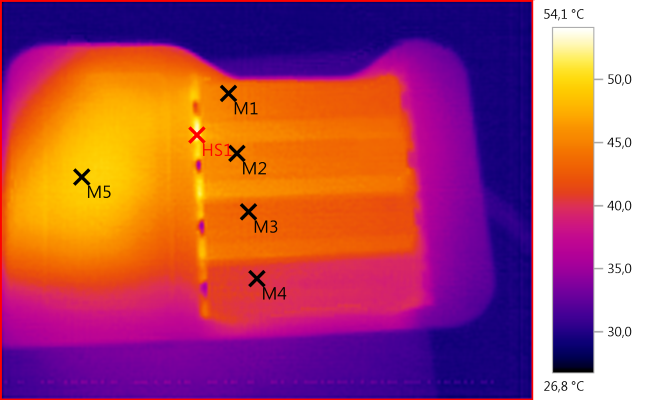
M1: 44,4°C, M2: 45,1°C, M3: 43,1°C, M4: 40,4°C, M5: 49,4°C, HS1: 54,1°C
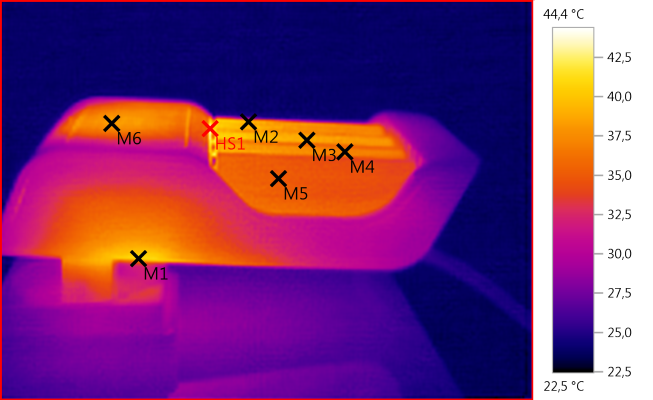
M1: 40,7°C, M2: 39,4°C, M3: 38,8°C, M4: 36,8°C, M5: 35,0°C, M6: 38,4°C, HS1: 44,4°C
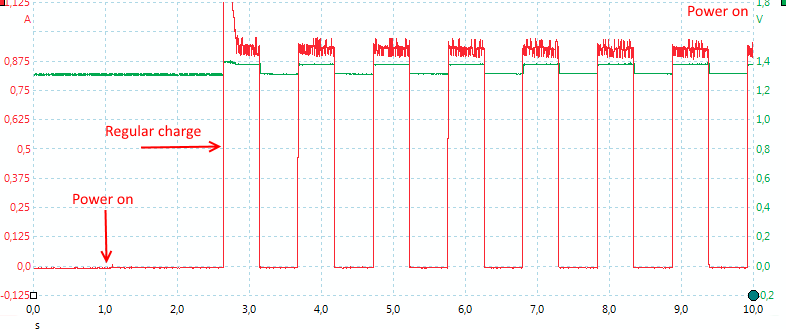
The charger needs less than two second to initialize and start charging.
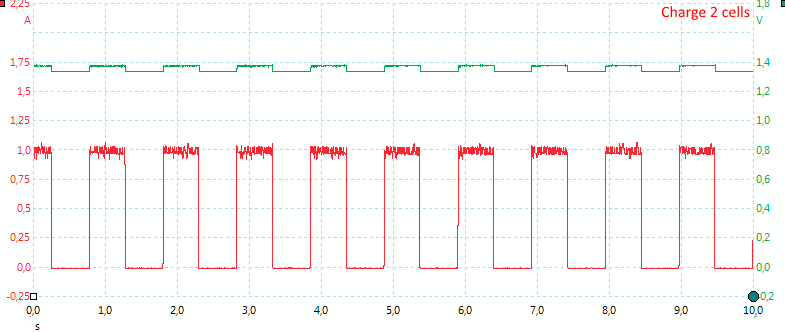
The actual charge current is 1A in 50% of the time why not use 0.5A?
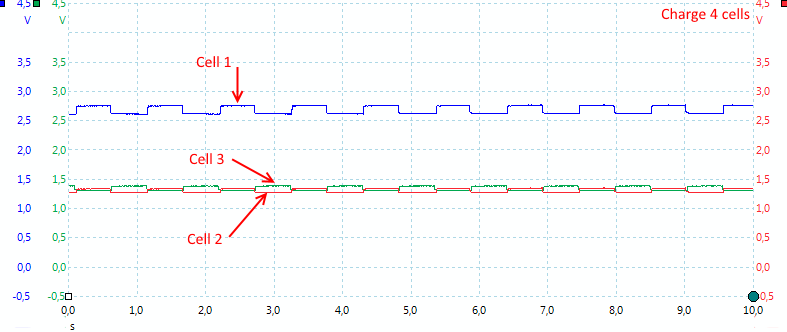
Looking at more channels shows why, the charger has one charge circuit that it is sharing between the two banks.
I.e. one single 3V 1A charge circuit that uses half the time on #1 & #2 and the other half time on #3 & #4.
Testing the mains transformer with 2500 volt and 5000 volt between mains and low volt side, did not show any safety problems.
Conclusion
As long as batteries has the same charge state and capacity the charger works fine, but batteries with different charge state cannot be handled in it.
This means the charger works fine when you keep your batteries in sets of two or four, but one or three does not work. I do not like this This means the charger works fine when you keep your batteries in sets of two or four, but one or three does not work. I do not like this behavior..
Notes
Here is an explanation on how I did the above charge curves: How do I test a charger